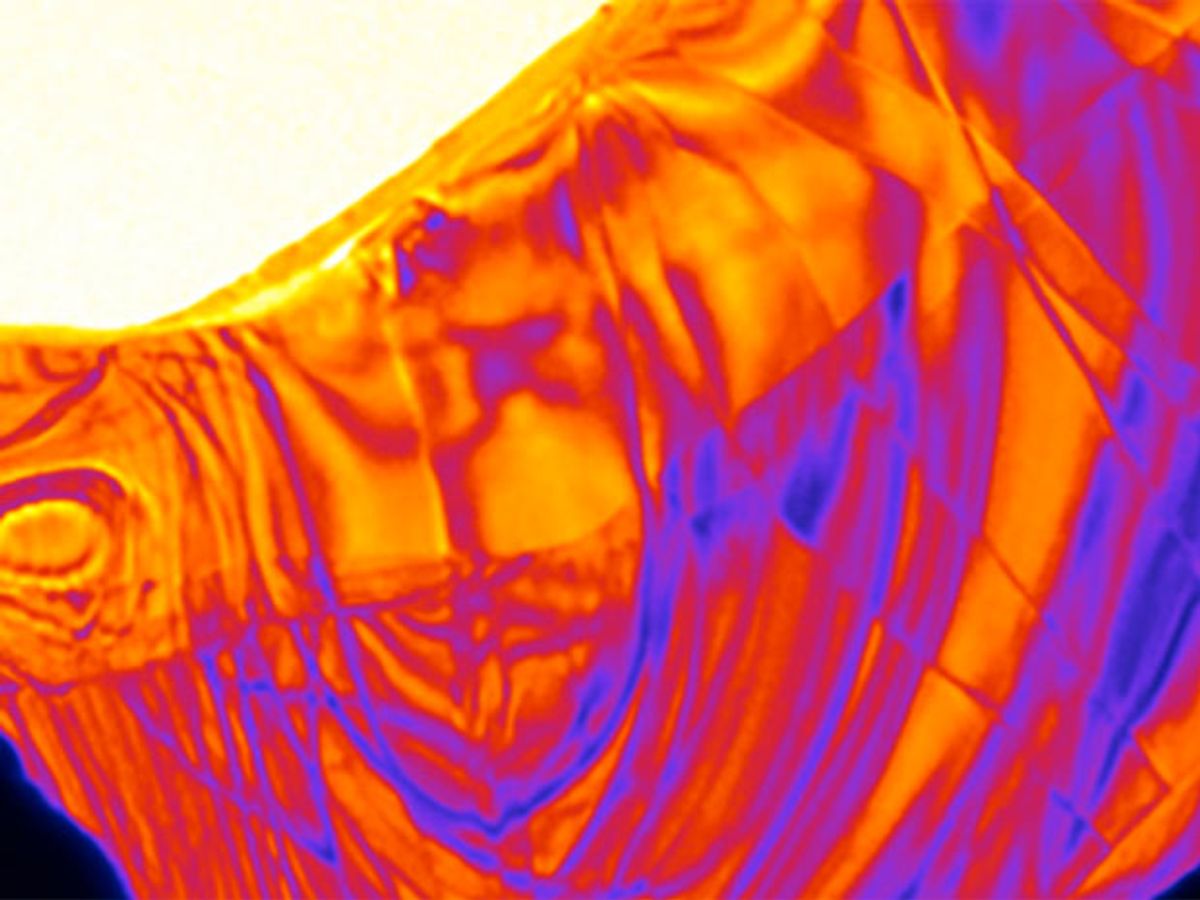Using ultrafast electron microscopy, researchers at the University of Minnesota in Minneapolis have made the first videos of acoustic phonons—quantized mechanical waves that carry energy through materials—moving heat through semiconductor crystals. The images show how defects in crystals of tungsten diselenide (WSe2) and germanium change the way enegy propagates through the material.
In the video, one of several published with their paper in Nature Communications, phonons arise and flow through the “macroscopically ordered but microscopically disordered” crystals as water flows through a rocky stream. Phonons typically traverse defects in 100 femtoseconds (100 x 10-15 s), making them challenging to catch in the act.
All along its path, the wave causes momentary elastic changes in the crystal structure. This, in turn, changes the way the material diffracts the stroboscopic bright-field electron stream, revealing the phonon’s progress. (Bright-field microscopy is the simplest technique, familiar from high-school biology: light shines up from below and passes through the specimen and up to the objective.)
"As soon as we saw the waves, we knew it was an extremely exciting observation," said lead researcher David Flannigan, an assistant professor of chemical engineering and materials science, in a university statement. "Actually watching this process happen at the nanoscale is a dream come true."
"In many applications, scientists and engineers want to understand thermal-energy motion, control it, collect it, and precisely guide it to do useful work or very quickly move it away from sensitive components," Flannigan said. "Because the lengths and times are so small and so fast, it has been very difficult to understand in detail how this occurs in materials that have imperfections, as essentially all materials do. Literally watching this process happen would go a very long way in building our understanding, and now we can do just that."
The researchers found that the phonons don’t start uniformly along the crystal’s edge, but rather begin at a smaller nucleating spot. The appearance of “coherent, propagating wavefronts” is “extremely sensitive to the shape of local strain fields…and vacuum-crystal interfaces”—in short, the behavior of the phonon reflects the crystal structure and directly reveals local thermal and electronic characteristics.
The University of Minnesota research is the latest showing in increasing detail how phonons carry heat and sound through condensed matter, suggesting how developers can induce, fine-tune, and test materials designed to order to transport heat and current.
Douglas McCormick is a freelance science writer and recovering entrepreneur. He has been chief editor of Nature Biotechnology, Pharmaceutical Technology, and Biotechniques.



